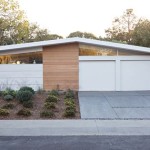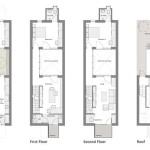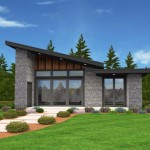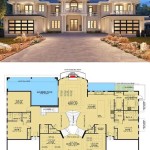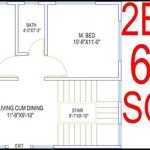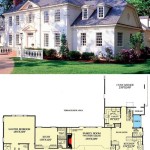Timberframe House Plans: Build Your Dream Home
Timberframe construction stands as a testament to enduring craftsmanship, offering a unique blend of structural integrity, aesthetic appeal, and sustainable building practices. Choosing timberframe house plans represents more than just selecting a style; it signifies a commitment to timeless design and a home that harmonizes with its natural surroundings. This article delves into the intricacies of timberframe house plans, exploring the various aspects that prospective homeowners should consider when embarking on this rewarding construction journey.
The inherent beauty of exposed timber, coupled with the structural advantages of this framing method, makes timberframe homes highly desirable. It is crucial to understand the planning process, design considerations, and specific requirements associated with timberframe construction to ensure a successful project. The following sections provide a comprehensive overview of the key elements to consider when planning a timberframe home.
Understanding Timberframe Construction
Timberframe construction, at its core, involves creating a structural framework of heavy timbers, joined together using mortise and tenon joinery. These joints are often secured with wooden pegs, creating a robust and visually striking skeleton for the house. Unlike conventional stick-frame construction, where walls are load-bearing, in timberframe homes, the timber frame itself carries the structural load. This allows for greater flexibility in wall design and interior layout.
The use of large timbers provides inherent stability and longevity. The timbers are carefully selected and crafted, often from locally sourced materials, contributing to the sustainability of the build. The visible timber frame also becomes a prominent design feature, lending character and warmth to the interior spaces. The exposed beams and posts create a sense of spaciousness and connection to nature.
The process typically begins with meticulous planning and design. Experienced timberframe designers work closely with clients to understand their needs and preferences, translating them into detailed plans that reflect both the aesthetic vision and the structural requirements of the home. This includes careful consideration of the site, orientation, and local building codes.
The timbers themselves are often prefabricated off-site in a controlled environment. This allows for precise cutting and joinery, ensuring a high level of accuracy and efficiency during the on-site assembly. The frame is then transported to the building site and erected, creating a skeleton that is ready to be enclosed with walls and roofing.
The infill panels between the timber frame can be customized to suit the homeowner’s preferences and budget. Options range from traditional materials like straw bale and cob to modern materials like structural insulated panels (SIPs). SIPs offer excellent insulation and energy efficiency, contributing to the creation of a comfortable and sustainable living environment.
Timberframe construction often prioritizes energy efficiency and sustainability. The use of natural materials, coupled with advanced insulation techniques, can result in homes that are both comfortable and environmentally responsible. The longevity of timberframe structures also contributes to their sustainability, as they are designed to last for generations.
Choosing the Right Timberframe House Plan
Selecting the appropriate timberframe house plan is a critical step in the building process. This involves considering a variety of factors, including the size of the home, the desired layout, the aesthetic style, and the budget constraints. Numerous resources are available to assist homeowners in finding the perfect plan to suit their needs.
Pre-designed timberframe house plans offer a convenient and cost-effective option. These plans have been developed by experienced designers and are readily available for purchase. They often come in a range of sizes and styles, allowing homeowners to choose a plan that closely matches their preferences. Modifications to pre-designed plans are also possible, allowing for personalization and customization.
Custom timberframe house plans provide the greatest level of design flexibility. Working with an architect or timberframe designer to create a custom plan ensures that the home is perfectly tailored to the homeowner's specific needs and desires. This approach allows for the incorporation of unique design elements, the optimization of space utilization, and the creation of a truly one-of-a-kind home.
The choice between a pre-designed plan and a custom plan often depends on the homeowner's budget and the level of personalization desired. Pre-designed plans are typically more affordable, while custom plans offer greater design freedom but come at a higher cost. Regardless of the approach chosen, it is essential to work with experienced professionals who understand the intricacies of timberframe construction.
When reviewing timberframe house plans, it is crucial to consider the structural aspects of the design. The plan should clearly indicate the size and placement of the timbers, the type of joinery used, and the overall structural integrity of the frame. It is also important to ensure that the plan complies with local building codes and regulations.
The layout of the home should be carefully considered to ensure that it meets the homeowner's lifestyle needs. Factors to consider include the number of bedrooms and bathrooms, the size and configuration of the living spaces, and the placement of the kitchen and other functional areas. The flow of the home should be intuitive and conducive to comfortable living.
The aesthetic style of the timberframe house plan should reflect the homeowner's personal preferences. Timberframe homes can be designed in a variety of styles, ranging from traditional to contemporary. Factors to consider include the shape of the roof, the style of the windows, and the overall architectural detailing.
Key Considerations in Timberframe Design and Construction
Beyond selecting a suitable house plan, several critical considerations must be addressed during the design and construction phases of a timberframe home. These include site preparation, timber selection, joinery techniques, insulation strategies, and integration of mechanical systems.
Proper site preparation is essential for a successful timberframe build. This involves clearing the site, grading the land, and ensuring that the foundation is properly constructed. The foundation must be capable of supporting the weight of the timber frame and providing a stable base for the entire structure. Soil testing is crucial to determine the load-bearing capacity of the ground and to design a foundation that will withstand the stresses imposed by the timber frame.
The selection of high-quality timbers is paramount to the structural integrity and longevity of the home. The timbers should be carefully inspected for defects and treated to prevent decay and insect infestation. Different species of wood offer varying degrees of strength, durability, and aesthetic appeal. The choice of timber species should be based on the specific requirements of the project and the homeowner's preferences.
The joinery techniques used in timberframe construction are critical to the overall structural performance of the frame. Mortise and tenon joints, secured with wooden pegs, are the hallmark of timberframe construction. These joints must be precisely cut and assembled to ensure a tight and secure fit. Skilled timber framers are essential to the creation of a robust and aesthetically pleasing frame.
Insulation is another key consideration in timberframe design. Because the timber frame itself is not insulated, the infill panels between the timbers must provide adequate thermal resistance. Structural insulated panels (SIPs) are a popular choice for timberframe infill, as they offer excellent insulation and structural performance. Other insulation options include spray foam, fiberglass batts, and cellulose. The choice of insulation should be based on the climate, the homeowner's energy efficiency goals, and the budget constraints.
The integration of mechanical systems, such as plumbing, electrical, and HVAC, must be carefully planned and executed. These systems should be designed to minimize their impact on the exposed timber frame. Conduits and pipes can be hidden within the infill panels or carefully routed along the timbers to maintain the aesthetic integrity of the frame. Energy-efficient mechanical systems can contribute to the overall sustainability of the home.
Cost management is crucial throughout the timberframe construction process. Careful planning, accurate budgeting, and value engineering can help to keep the project on track and within budget. It is essential to obtain multiple bids from contractors and suppliers and to closely monitor expenses throughout the construction process. The choice of materials and finishes can also have a significant impact on the overall cost of the project.
Building a timberframe home is a significant undertaking that requires careful planning, meticulous execution, and a commitment to quality craftsmanship. By understanding the key considerations involved in timberframe design and construction, homeowners can ensure that their dream home becomes a reality, providing years of comfort, beauty, and enduring value.

Timber Frame Home Plans Designs By Hamill Creek Homes

Timber Frame Home Plans Designs By Hamill Creek Homes

Luxury Timber Frame Home Plans Customizable Golden Eagle

Timber Frame Designs Floor Plans Timberbuilt

Building Your Dream Custom Home What To Bring That First Meeting With Architect And Questions You Should Definitely Ask Woodhouse The Timber Frame

Timber Frame Designs Floor Plans Timberbuilt

Timber Frame Homes Home Plans And Framing Designs

Golden Eagle Log And Timber Homes Plans Pricing Plan Details Ranch Ii Uct

Small Timber Frames Home Charm Natural Element Homes

Five Timber Frame Mountain Homes You Ll Dream About Woodhouse The
Related Posts


